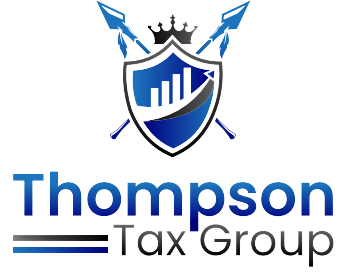
Home energy tax credits are incentives provided by governments to encourage homeowners to make energy-efficient improvements to their homes. These credits allow homeowners to claim a portion of the costs incurred for qualifying energy-efficient upgrades as a credit on their tax returns, potentially reducing their overall tax liability. But what are the two kinds of home energy tax credits, and how do they work?
In the United States, for example, the federal government offers various energy-related tax credits to homeowners. There are two forms of Home Energy Tax Credit: the Residential Clean Energy Property Credit and the Energy Efficient Home Improvement Credit.
How Does Home Energy Tax Credit Work?
The Inflation Reduction Act of 2022 has broadened the range of qualifying expenses and increased the amounts of tax credits available for homeowners who make energy improvements to their homes. These credits allow homeowners to claim a portion of their eligible expenses as credits on their taxes.
What are the Two Kinds of Home Energy Tax Credits?
Homeowners have access to two major energy-related tax credits.
Residential Clean Energy Property Credit
This particular credit is for individuals who install alternative energy systems in their homes. This includes things like solar panels. Practically any form of renewable source that utilizes wind, geothermal energy, fuel cells, and battery storage items are covered. Anything that captures, stores, and utilizes energy in any shape or form is a part of this credit classification. This home energy tax credit may be applied to your primary residence or secondary home.
There is a modification on this particular credit. You get 30% on your costs back as a tax credit. This means if you buy solar panels for $30,000, 30% of that is at $9,000. This means you have a $9,000 tax credit on your tax return. But this highly depends on when your solar panels were installed. If you signed the contract on December 31, 2022, but they won’t install until January 1, 2023, your tax credit applies for 2023.
There is no cap applied for solar panels and other renewable sources. This means, if you spend $100,000 on solar panels, you’re going to get a $30,000 tax credit. However, if you’re using fuel cell systems, there is a cap of $500 for each half kilowatt of power capacity.
If in the event you get a rebate for your purchase, you are entitled to 30% of the total purchase price. Let’s say you purchase solar panels for $10,0000 and then you were given a rebate of $1,000. You are theoretically only paying $9,000, your home energy tax credit will be based on the 30% of $9,000 which is $3,000.
Which Home Equipment Qualify for Residential Clean Energy Tax Credit?
Solar, wind, geothermal, and fuel-cell technologies are among the eligible equipment that qualifies for the Residential Clean Energy Tax Credit.
Energy Efficient Home Improvement Credit
The Residential Clean Energy Credit is a nonrefundable tax credit available to homeowners in the United States who have made energy-saving improvements to their homes. From 2022 through 2033, this credit amounts to 30% of the costs but sets annual limits on the credit amount. incurred for installing eligible clean energy property. It’s important to note that the credit cannot exceed the taxpayer’s tax liability, but any unused portion can be carried forward to offset future tax obligations. Note that the home energy tax credit does not include interest payments, including loan origination fees.
Let’s assume you have a $10,000 water heater installed, 30% of that is $3,000. However, that $3000 is above the $1200 general aggregate yearly credit limit. This means that the maximum you can get from your $10,000 water heater is $1,200 only.
There is a $1,200 general aggregate yearly credit limit. The $1,200 cap includes everything that you get in this category minus a few exceptions. However, there are certain improvements that can be subject to even lower annual credit. If you have a home energy audit, the credit is only going to be $150. You’re still subjected to that 30% but it will be reduced further to $150. Some items like biomass stoves or boilers, electric or natural gas heat-pump water heaters, or electric or natural gas heat pumps have a higher yearly credit that can amount to $2,000.
If you put in a natural gas heat pump that costs about $8,000, a natural gas tankless water heater that costs $3,000, and a central air conditioning system that costs $7,000, your total maximum credit will be $3,200 only. That’s $2,000 for the heat pump, $600 for the water heater, and $600 for the air conditioner.
Which Home Improvements Qualify for the Energy Efficient Home Improvement Energy Tax Credit?
Starting from January 1, 2023, the credit amount for qualifying home improvements will be either 30% of the total amount paid for the improvements or the annual credit limit of $1,200, whichever is lower. Along with the overall $1,200 limit, there are specific annual dollar limits for certain items, including:
- Home energy audits: Limited to $150.
- Exterior doors: Limited to $250 per door, with a maximum of $500 per year.
- Exterior windows, skylights, central air conditioning units, electric panels and related equipment, natural gas, propane, and oil water heaters, furnaces, or hot water boilers: Limited to $600.
Who Can Claim the Home Energy Tax Credit?
When you make qualifying improvements, you have the option to choose between claiming the Energy Efficient Home Improvement Credit or the Residential Energy Clean Property Credit for that particular year.
Homeowners who enhance their primary residence have the greatest chances of claiming credits for eligible expenses. However, renters and owners of second homes used as residences may also have opportunities to claim credits. It’s important to note that the home energy tax credit is not available for improvements made to homes that are not used as residences.

2 Comments